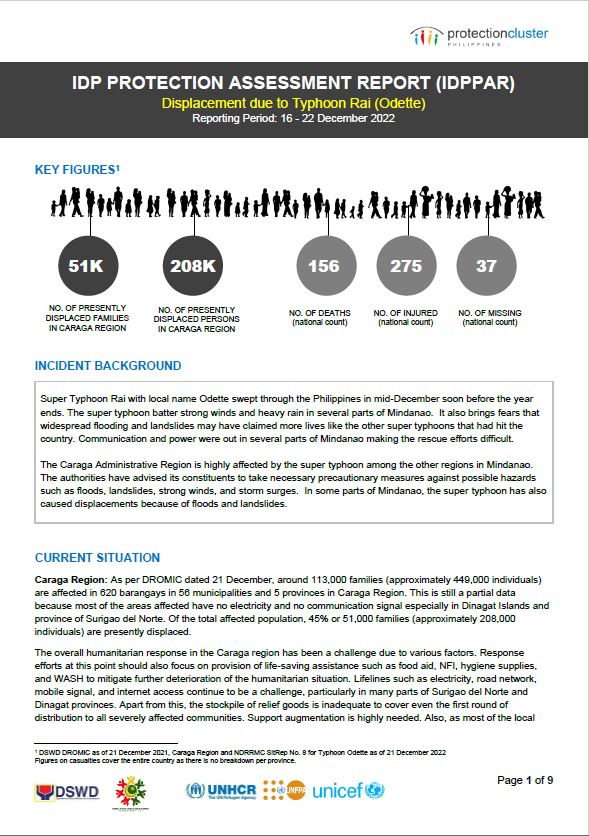IDPPAR No. 10, 2021: Displacement due to Typhoon Rai (Odette), Issue no. 01
INCIDENT BACKGROUND
Super Typhoon Rai with local name Odette swept through the Philippines in mid-December soon before the year ends. The super typhoon batter strong winds and heavy rain in several parts of Mindanao. It also brings fears that widespread flooding and landslides may have claimed more lives like the other super typhoons that had hit the country. Communication and power were out in several parts of Mindanao making the rescue efforts difficult.
The Caraga Administrative Region is highly affected by the super typhoon among the other regions in Mindanao. The authorities have advised its constituents to take necessary precautionary measures against possible hazards such as floods, landslides, strong winds, and storm surges. In some parts of Mindanao, the super typhoon has also caused displacements because of floods and landslides.
CURRENT SITUATION
Caraga Region: As per DROMIC dated 21 December, around 113,000 families (approximately 449,000 individuals) are affected in 620 barangays in 56 municipalities and 5 provinces in Caraga Region. This is still a partial data because most of the areas affected have no electricity and no communication signal especially in Dinagat Islands and province of Surigao del Norte. Of the total affected population, 45% or 51,000 families (approximately 208,000 individuals) are presently displaced.
The overall humanitarian response in the Caraga region has been a challenge due to various factors. Response efforts at this point should also focus on provision of life-saving assistance such as food aid, NFI, hygiene supplies, and WASH to mitigate further deterioration of the humanitarian situation. Lifelines such as electricity, road network, mobile signal, and internet access continue to be a challenge, particularly in many parts of Surigao del Norte and Dinagat provinces. Apart from this, the stockpile of relief goods is inadequate to cover even the first round of distribution to all severely affected communities. Support augmentation is highly needed. Also, as most of the local government units in the barangay and municipality/city level are also affected, their capacity to respond immediately to their constituents has been greatly crippled.

